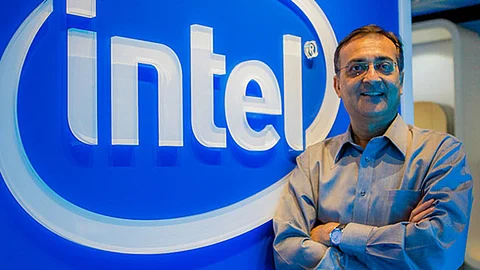
- HOMEGROWN WORLD
- #HGCREATORS
- #HGEXPLORE
- #HGVOICES
- #HGSHOP
- CAREERS
- ABOUT US
- CONTACT US

In 1992, Ajay Bhatt, an Intel employee, found himself frustrated. At the time, he was a father, and like many parents, he had to help his child with schoolwork. But something as simple as printing out documents for his kid was turning into a hassle. His wife had called him at work, asking how to print some school materials. What was the problem? Well, the computer wouldn’t cooperate. Why couldn’t he just plug in multiple devices to the same port? Why did it have to be so complicated?
This simple, everyday frustration led to a groundbreaking idea. Ajay decided that it was time for a universal solution to the messy cables, devices, and connectors that were choking the tech world. He envisioned a single, standard connector that could connect all sorts of devices —everything from printers to scanners, and even external hard drives. And that’s how the Universal Serial Bus, or USB, was born. But while the idea was brilliant, getting it off the ground was no easy task.
Fast forward to 1996, when Bhatt’s team at Intel finally created the first set of USB products. But despite the potential, there was a big problem: convincing people it was a good idea. Even Intel’s own management wasn’t entirely sold on the idea. After all, it was a huge shift in how devices would connect to computers, and no one was sure how the market would respond. But Bhatt was persistent. He believed in the idea so much that he kept refining it until Intel finally embraced it.
Interestingly, Bhatt didn’t patent the USB. At the time, he had 31 patents under his belt, but the USB wasn’t one of them. Why? Because it wasn’t just his brainchild. It was a product of collaboration, with input from many engineers and even other companies that helped shape it. Bhatt also recognized the power of the idea — it was going to be something that the whole world needed, and limiting it by patenting it would have been futile. Instead, he made it open for everyone to use, and the rest, as they say, is history.
By the late ‘90s, USB connectors were everywhere. Even Apple and Microsoft adopted the technology, and it quickly became the standard across personal electronics. But for Bhatt, this success didn’t come with a big payday. He didn’t see any direct financial benefit from his creation, but he wasn’t concerned. His logic was simple: if the market grew thanks to his invention, Intel would sell more products, and that was his biggest profit.
Although Bhatt was the mastermind behind USB, it wasn’t until a 2009 Intel commercial that the world really took notice of him. In the ad, Bhatt was portrayed as a rockstar employee, with Intel workers fawning over him like fans as he walked into the cafeteria. The tagline? "Our rock stars are not like your rock stars." That ad turned Bhatt into a household name, a real-life tech celebrity. Before that, he was a quietly respected engineer at Intel. But after that commercial, everyone knew his name.
Ajay Bhatt’s journey didn’t stop at the USB. He was also involved in developing other key technologies, like the AGP bus, which greatly improved the performance of graphics cards, and its successor, PCI Express. By the time he retired, Bhatt had accumulated over 130 patents. But what truly set him apart was his mission to make technology more accessible, user-friendly, and, most importantly, universal.
When we look at all the devices we use today — smartphones, tablets, game consoles, and even cars — we might take the USB for granted. But imagine a world where you had to hunt for the right adapter for every device you connected. The USB made life easier for both amateurs and engineers. It wasn’t just a tech breakthrough; it was a revolution in simplifying our digital lives.
Today, USBs are everywhere. You’ll find them in almost every consumer electronic device. With the introduction of USB 3.1 and USB-C, the technology has evolved even further, competing with HDMI and other high-current power connectors. What started as a simple idea to make life easier for one frustrated parent has now become the global standard, changing the way we power and connect devices. And in a world where so many things seem to be complicated, Ajay Bhatt’s invention stands as a shining example of how necessity truly is the mother of invention.
So, next time you plug in your phone charger or connect your laptop to a printer, take a moment to appreciate Ajay Bhatt. The man who made sure that the question "How do I connect it?" would never be a problem again.
